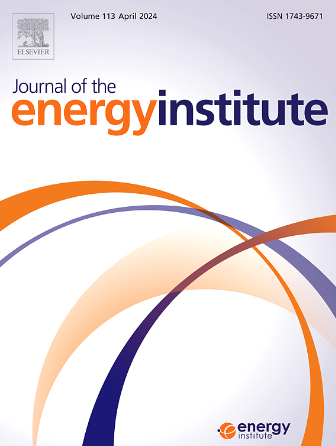氨气转化对带有主动前腔的四气门发动机燃烧和排放特性的影响
IF 5.6
2区 工程技术
Q2 ENERGY & FUELS
引用次数: 0
摘要
氨(NH3)作为一种氢载体和无碳燃料,为发动机实现碳中和提供了一个极具吸引力的机会。湍流喷射点火(TJI)结合氨气重整显示了氨气燃料发动机的巨大潜力。在本研究中,针对重整比和重整区域,对氨燃料 TJI 中重整策略的影响进行了数值研究。结果表明,如果只在前腔使用重整液,喷射火焰对初始燃烧阶段的促进作用更为有效。由于主燃烧室的反应活性较低,NH3 的排放量仍然很高。进一步在前室和主室中使用重整液,所有燃烧阶段(ST-CA10、CA10-50、CA50-90)都能随着重整比的增加而几乎线性地缩短。此外,当重整比达到 200 ‰(氢能比为 18.50 %)时,未燃烧的 NH3 可以减少到可接受的水平。主要原因是射流引发的强流场与整个燃烧阶段相吻合。进一步提高前室的重整比(纯氢),可在低氢能比(7.08 %)下实现高燃烧效率和可接受的 NH3 排放。然而,在高重整比、低爆震强度的情况下,会出现爆震燃烧。这些结果为采用不同重整策略的氨 TJI 发动机充分利用有限的氢气提供了指导。本文章由计算机程序翻译,如有差异,请以英文原文为准。
Effect of ammonia reforming on combustion and emission characteristics of a 4-valve engine with an active pre-chamber
Ammonia (NH3), as a hydrogen carrier and carbon-free fuel, offers an attractive opportunity for engines to achieve carbon neutrality. Turbulent jet ignition (TJI) combined with ammonia reforming shows the great capacity in ammonia-fueled engines. In this study, the effects of reforming strategy in an ammonia-fueled TJI are numerically studied, addressing the reforming ratio and reforming region. The results show that when only using reformate in the pre-chamber, the promoting effect of jet flame is more effective on the initial combustion phase. There are still very high NH3 emissions due to the low reactivity in the main chamber. Further using reformate both in the pre-chamber and the main chamber, all the combustion stages (ST-CA10, CA10-50, CA50-90) can be shortened almost linearly with the increase of reforming ratio. Besides, the unburned NH3 can be reduced to an acceptable level when the reforming ratio reaches 200 ‰ (hydrogen energy ratio of 18.50 %). The main reason is that the jet-induced strong flow field is coincident with the whole combustion stage. Further increasing the reforming ratio (pure hydrogen) in the pre-chamber, a high combustion efficiency and acceptable NH3 emission can be achieved at a low hydrogen energy ratio (7.08 %). However, knocking combustion will happen at high reforming ratio with a low knock intensity. The results can provide some guidance for making the best-promoting benefit of the limited hydrogen in ammonia TJI engines with different reforming strategies.
求助全文
通过发布文献求助,成功后即可免费获取论文全文。
去求助
来源期刊

Journal of The Energy Institute
工程技术-能源与燃料
CiteScore
10.60
自引率
5.30%
发文量
166
审稿时长
16 days
期刊介绍:
The Journal of the Energy Institute provides peer reviewed coverage of original high quality research on energy, engineering and technology.The coverage is broad and the main areas of interest include:
Combustion engineering and associated technologies; process heating; power generation; engines and propulsion; emissions and environmental pollution control; clean coal technologies; carbon abatement technologies
Emissions and environmental pollution control; safety and hazards;
Clean coal technologies; carbon abatement technologies, including carbon capture and storage, CCS;
Petroleum engineering and fuel quality, including storage and transport
Alternative energy sources; biomass utilisation and biomass conversion technologies; energy from waste, incineration and recycling
Energy conversion, energy recovery and energy efficiency; space heating, fuel cells, heat pumps and cooling systems
Energy storage
The journal''s coverage reflects changes in energy technology that result from the transition to more efficient energy production and end use together with reduced carbon emission.
 求助内容:
求助内容: 应助结果提醒方式:
应助结果提醒方式:


